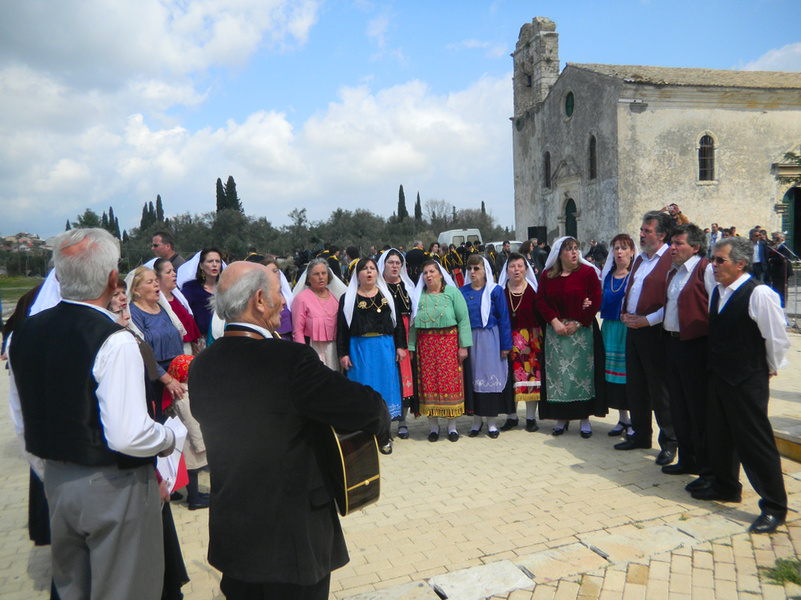

A rich heritage
Once, there were people living in Corfu who practised the arts. Historical events, chance, the status quo, favoured them, and subsequent generations built on the foundations they created. Artists, writers, poets, scholars and architects lived side by side in Corfu for many years, forming the unique 'culture club'.
At the end of the 16th century the famous Cretan artist Michael Damaskinos arrived in Corfu and stayed for some years. He opened the way for the transplantation of the Cretan School of art to the Ionian Islands, which was completed during the next century by the arrival of many Cretan artists and scholars.
Refugees fleeing from the Turks increased their numbers. During the 18th century these new factors, in conjunction with the western influence of Venice, would contribute to a cultural renaissance in Corfu and eventually, a century later, would establish the island as the cultural centre of Greece.
This 200-year period was extremely important, as we shall see. As an example we shall refer to the most important personalities and works of this period. The Cretan artists Tzanes, Poulakis, Skoufos (17th century) painted icons which are still preserved today in churches in the town. Later, Doxaras introduced the use of oil-based paint into the tradition of Greek iconography. The 18th century saw the arrival of the scholars E. Voulgaris and Nikiforos Theotokis, who wrote their works in Greek, while their contemporaries were still speaking Italian.
Italian operas were produced at the San Giacomo Theatre (now the Town Hall).The first Ionian Academy was founded in 1808, but it did not last long. In 1815 the artist and sculptor Pavlos Prosalentis founded the School of Fine Arts and a little later the philhellene English aristocrat Lord Guilford re-founded the Ionian Academy, which functioned until union with Greece took place in 1864. The well-known poet Andreas Kalvos taught there. 1828 saw the arrival of Dionysos Solomos, and a large literary circle grew up around him, including Polylas and Markoras. The members of this circle initiated the use of the demotic Greek language and thus laid the foundation for modern Greek literature. This renaissance, which extended throughout the seven Ionian Islands, is known as the 'Ionian School' and it is characterised by its insistence on the perfection of its creations. Nikolaos Mantzaros, a close friend of Solomos, founded the first school of contemporary music and set Solomos' poem 'Hymn to Liberty' to music. Thirty years later, this was to become the National Anthem of Greece.
In 1840 the Old Philharmonic Orchestra was founded and in 1890 the Mantzaros Orchestra. Entering the 20th century, the artist Angelos Giallinas and the writer K. Theotokis captured, each through his own medium, the spirit of Corfu of the time.
Once, there were people living in Corfu who practised the arts. Historical events, chance, the status quo, favoured them, and subsequent generations built on the foundations they created. Artists, writers, poets, scholars and architects lived side by side in Corfu for many years, forming the unique 'culture club'.
History: The march of history in Corfu, from ancient times until the present day.
Nature: Nature with lush vegetation, unspoilt beaches, traditional villages.
Life Today: Feel the pulse of the island, with its strong cultural connections, its devout religious celebrations. Learn the words you will need.
Faith: The religious beliefs of the Corfiots, and Saint Spiridon. All the processions. When they take place and why.